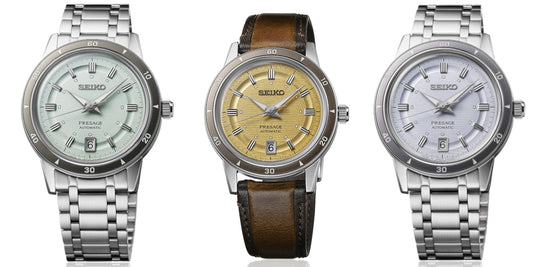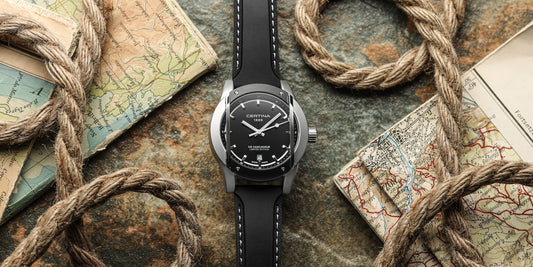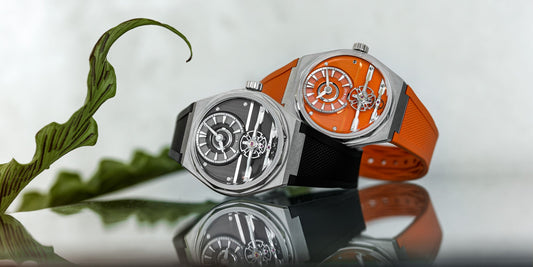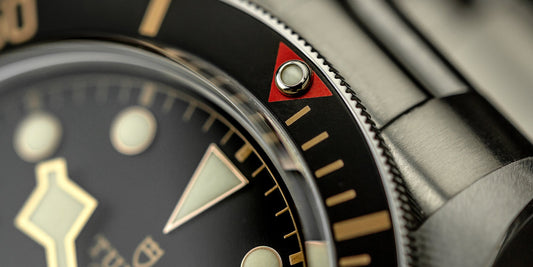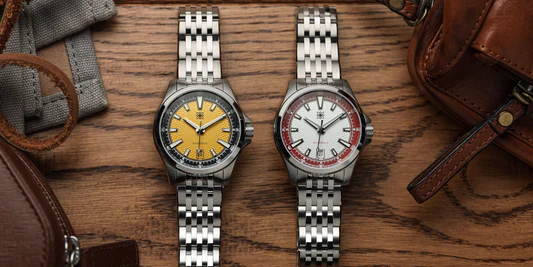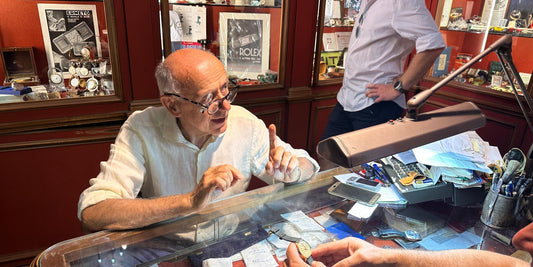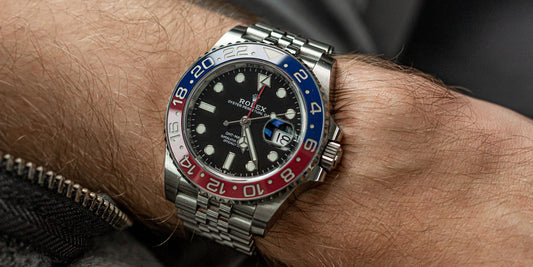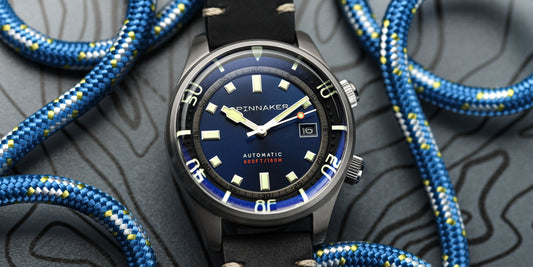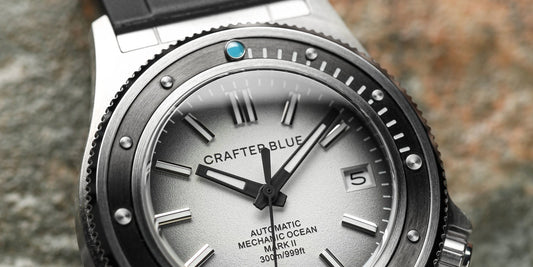Naming a watch company after the Titanic wouldn’t have been a great omen.
And that’s probably one reason Ireland’s first watchmaker decided to call their company after the Nomadic instead: the Titanic’s transport ship, also built in the famed Harland and Wolff shipbuilding yard in Belfast in 1911.
The Nomadic was a much smaller vessel than the famed Titanic at exactly a quarter of the size – although still able to transport 1000 people – and it was designed to carry passengers and mail to and from the luxury liner. Remarkably, it still exists now as a museum in Belfast, having been restored by Harland and Wolff a century after it was first built.
 Nomadic Marai 401 - Credit WatchGecko
Nomadic Marai 401 - Credit WatchGecko
This was the story that inspired Nomadic founder Peter McAuley, a mechanical engineer and watch collector from Belfast. You can hear from him here, where he tells us more about this fascinating venture.
‘Nomadic’ also contained much more of the sense of what McAuley wanted his watches to be: companions for untrammeled people who travel the world and enjoy a diverse range of adventures.
Unlike many start-up watch companies, he followed the first rule to the letter: keep it simple. The result is a classically proportioned and styled dive watch, complete with a tried and trusted Swiss Sellita SW200-1 movement housed within a 40mm stainless steel case.
 Nomadic Marai 401 - Credit WatchGecko
Nomadic Marai 401 - Credit WatchGecko
Fans of the Rolex Submariner and Tudor Black Bay will love this watch, and that’s definitely no bad thing. There are some notable differences though particularlyin , the suitably emerald color of the Marai 401 dive watch that we’ve been lucky enough to try out. In Gaelic, Marai means seafarer, while 401 refers to the fact that the Nomadic was the 401st ship to be produced by the famed Harland and Wolff company. That shipyard in Belfast was traditionally dominated by huge yellow cranes; these are mirrored in the yellow seconds hand on each watch.
So the design story hangs together well, as does the cost at £820. There’s a lot of competition at that price point, but if you consider the Nomadic to be a direct alternative to the Tudor and watches of a similar ilk, then it begins to make a lot of sense. And the truth is, having worn the Nomadic for a period of time, it’s genuinely a good alternative.
 Nomadic Marai 401 - Credit WatchGecko
Nomadic Marai 401 - Credit WatchGecko
Wearing it, the quality is evident from the start, and personally, I’m a sucker for green watches. What I like about this model is that it’s really not trying to reinvent the wheel but sticking resolutely to a familiar theme. It has just the right amount of heft to it – neither too heavy nor too light – and the bracelet (which is often the giveaway) is robust and comfortable to wear as well.
The only thing I didn’t like as much were the hands, which I felt initially could have been a bit thicker, Tudor-style. But in time, I got used to this and even began to appreciate the extra finesse that the more delicate hands gave it. I got to experience this watch in a wide variety of contexts on my travels, from Paris to Dubai and lived very happily with it. I realised just how much it had gotten under my skin the other day when I found myself selecting a green checked shirt from the wardrobe to match the watch...
 Nomadic Marai 401 - Credit WatchGecko
Nomadic Marai 401 - Credit WatchGecko
The Dubai trip was a particular test, as with some important business meetings to go to and 43 degrees centigrade outside (in early June), it had to look the part, especially seeing as everyone else would probably be sporting their Pateks and Rolexes (this is Dubai, after all). Not only did the Nomadic pass muster, but it actually drew several compliments. The fact that this was an Irish watch – a concept that nobody had previously heard of – with a Titanic connection was a particular talking point. I might be spending a bit more time in Dubai in the future as a digital nomad, so there was no more appropriate watch to wear during my brief time there on this occasion.
However, the biggest coincidence had actually happened a week earlier when I took the Marai 401 to Paris. I did something that I haven’t done for years, taking a bateau mouche – those characteristically long and packed French tourist barges – down the Seine.
 Nomadic Marai 401 - Credit WatchGecko
Nomadic Marai 401 - Credit WatchGecko
The route took in the Eiffel Tower (bien sur) and then turned back round towards the city center, my bateau mouche lumbering through 180 degrees near an old mooring where a few boats are docked, with a magnificent view of the most famous landmark in Paris.
So imagine my surprise when I discovered that from 1974 to 1999, the mooring opposite the Eiffel Tower had, in fact, been the home of the Nomadic, which was turned into a floating restaurant after being rescued from a hard industrial life in Cherbourg (where it was renamed the Ingenieur Menard and worked for the port authority). The original plan was for the Nomadic to be scrapped and another chapter of history lost forever before a gastronomic entrepreneur – no coincidence that this is a French word – called Yvon Vincent stepped in to buy her, giving the ship a new lease of life that led to her destiny today.
As I took my tourist snaps of the watch against the backdrop of the Eiffel Tower, I had absolutely no idea that I was just meters away from where the object of my inspiration had lived right from the year I was born for more than two decades.


